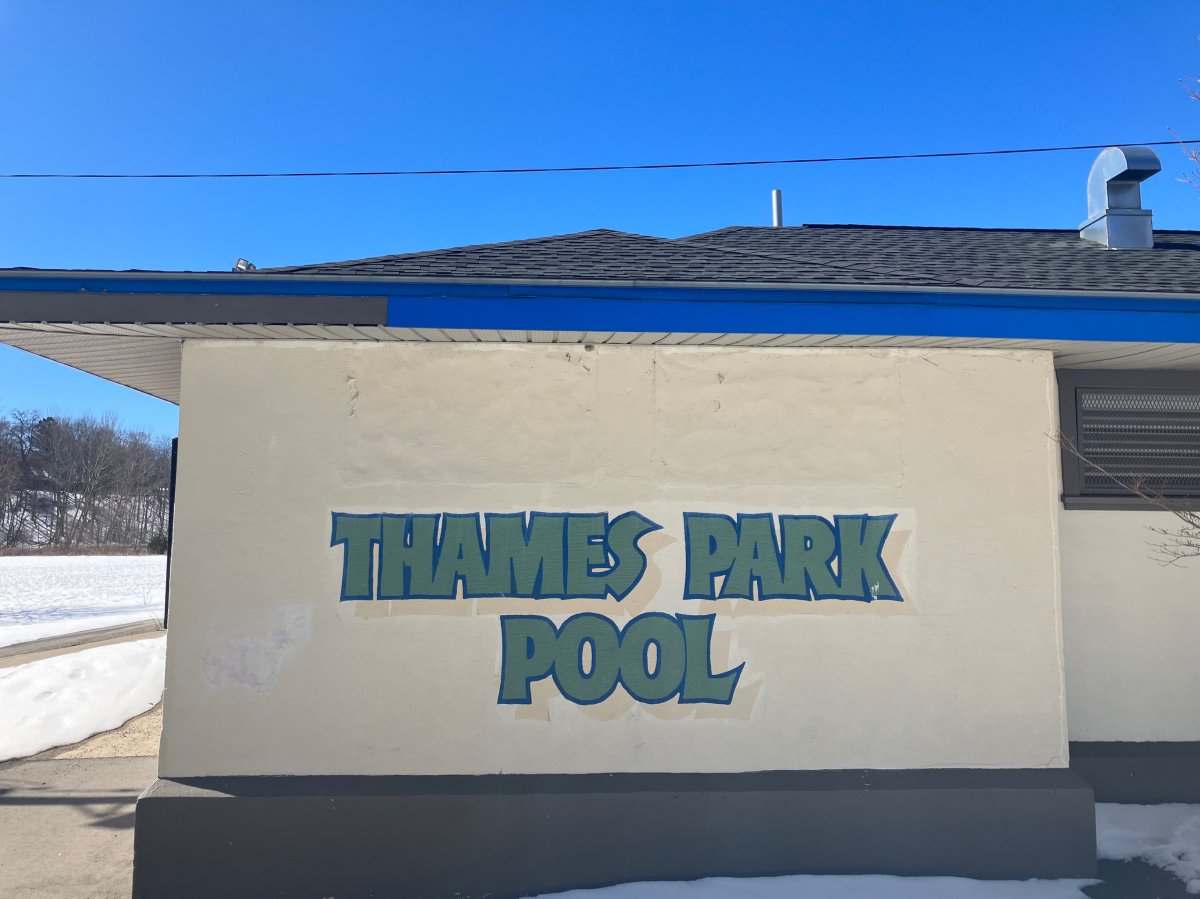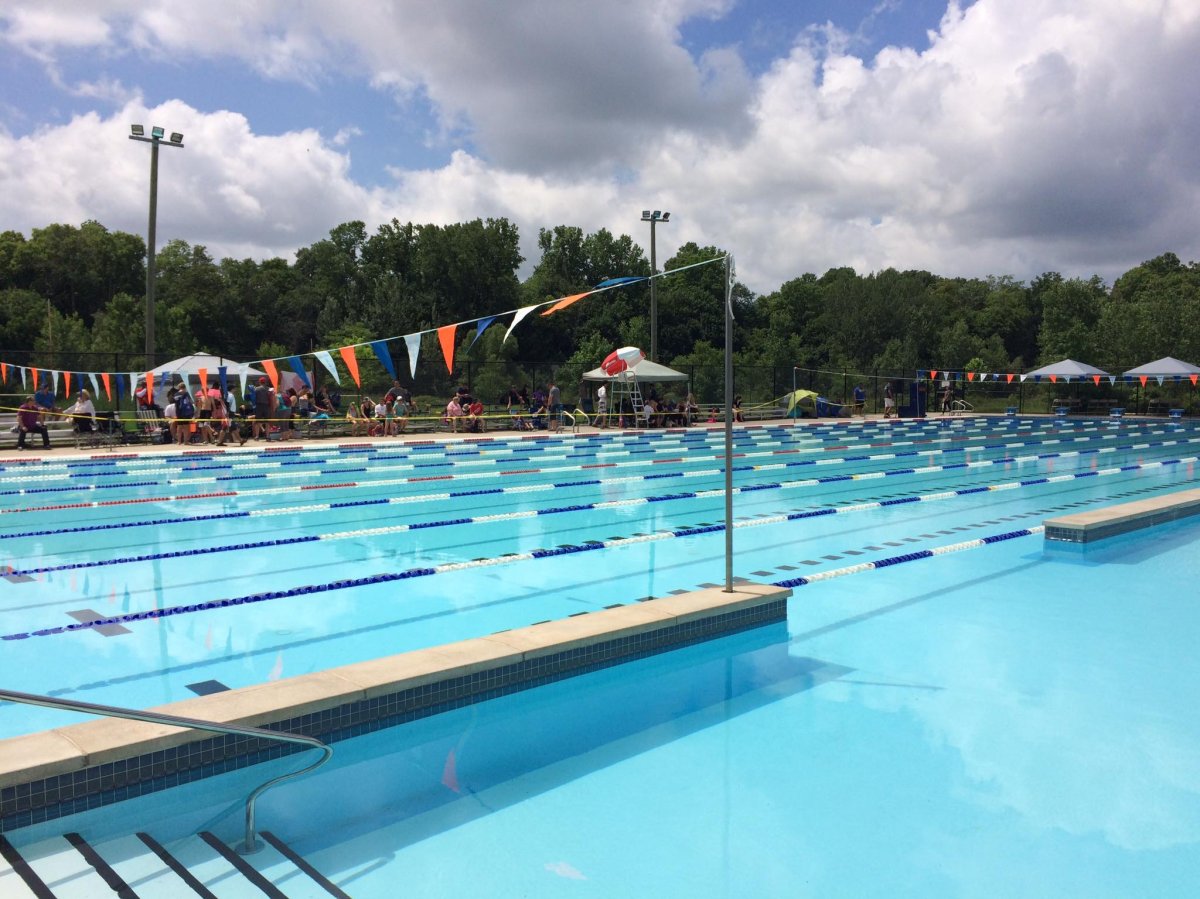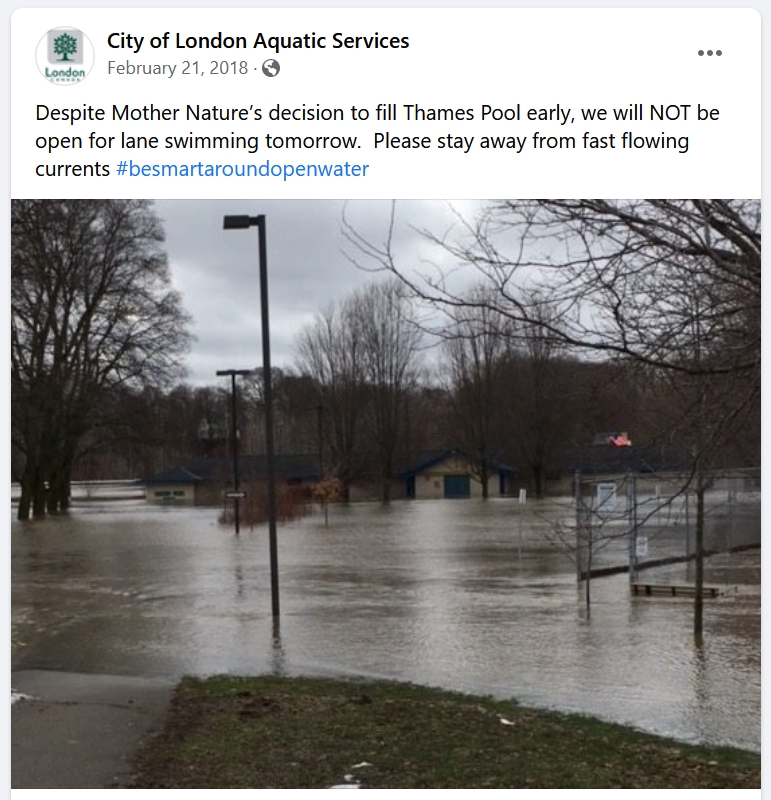More than 1,500 people have attached their names to a Change.org petition calling for London’s Thames Park Pool to remain open for future use.

It comes on the heels of a city staff report, set to go before next week’s Community and Protective Services committee, which recommends that council decommission the pool amid ongoing infrastructure issues and explore “future recreation and sport opportunities” for the park.
“We need to ensure our voice is heard immediately,” that the facility is valued by the aquatic community, and by those in the downtown and Old South, and that the city should reinvest to “ensure the long term viability of this historical and community asset,” the petition says.
“The communities affected cannot afford to lose one of the only (50 metre) outdoor pools in all of Ontario. Our communities fought hard to ensure this didn’t happen over a decade ago and we cannot let this facility attempted to be taken away again.”
Jason Wedlake is named as the creator of the petition. Global News attempted to contact Wedlake through Change.org’s press team but did not receive a response by publishing time.
Word of the pool’s possible permanent closure sparked pushback from the community, including from three-time Olympic medallist Maggie Mac Neil, who tweeted on Wednesday that the pool had been her training grounds during the pandemic before the 2021 Olympics.
“It’s really important for us to make sure that we recognize how important this pool has been to the community, and we’re aware of that,” said Jon-Paul McGonigle, director of recreation and sport for the city.
“This has been an incredibly difficult circumstance to try and work our way through and provide committee and council the best advice based on the circumstances that are happening at that site.”
Coun. Elizabeth Peloza, who chairs the Community and Protective Services committee, told Global News the committee has been receiving emails from the public asking that it be kept open.
“My concern is that it’s just come in a report, it’s the middle of winter and the community isn’t likely thinking about swimming right now, and just that community engagement piece,” she said. “Looking to committee to see what the conversation will be … and how, even if we did repairs, is there a way to salvage part of this swim season in 2023 while we look for alternate locations.”
Thames Park Pool is the city’s only 50-metre outdoor pool, and is the busiest of the 11 outdoor pools the municipality operates, clocking in 25,000 visitors every year, nearly three times that of Stronach, London’s second-busiest outdoor pool.
It’s also the oldest. Originally constructed in 1927, it was renovated in 1959 and then redeveloped entirely in 2010 at a cost of $4.6 million, complete with a 50-metre eight-lane pool, shallow splash pool and water slide. The repairs were expected to last several decades.
Since then, however, city staff say the pool has experienced ongoing infrastructure problems, and that due to its proximity to the Thames River and its location within the floodplain, the pool is “vulnerable to hydrogeologic forces, specifically flooding and groundwater.”
The city closed the pool to the public last June after infrastructure issues were identified in the lead-up to the summer swimming season. “There (were) some real noticeable infrastructure failures and concerns that were well above or well past what people were used to and comfortable with,” McGonigle said.
A review conducted by a consulting team in the fall, aimed at identifying likely causes and possible solutions, concluded the pool had experienced differential movement in its floor, failures in its piping systems, and a loss of base support as a result of hydrostatic uplift pressure or frost penetration underneath the pool.
“The level of groundwater is too high and the freeze and thaw cycles are just putting too much pressure on the bottom of the pool,” McGonigle said.
The consulting team put forward five possible solutions to choose from. The fifth option, to decommission the pool and explore future recreation and sport opportunities for the park and surrounding neighbourhood, including the feasibility of an indoor pool at a future community centre build, is what’s being recommended by city staff.
“None of us certainly want to put this forward, but as public servants, we do have a responsibility to provide our best advice to committee and council for their consideration,” McGonigle said.
“As we tried to formulate a recommendation for council in committee, we just did not have a high degree of confidence that any steps that we took in the options to repair mitigated the risk where we are going to be having this conversation a few years from now.”
Other options put forward by the consultants include spending $375,000 for short-term minimum repairs, or $600,000 for more extensive repairs that would take about eight months to complete. Both, however, are short-term fixes.
A more long-term solution would be to rehabilitate the pool over the course of a year for an estimated $4 million, or rebuild the site from the ground up for $12 million. However, high groundwater or floods could still cause damage and the location of the pool in the floodplain “still presents ongoing risks,” the report says.
City hall has spent at least $238,000 since 2016 repairing the pool, including $145,000 to repair damage from a major 2018 flood in which water rose 1.2 metres above the deck of the pool. At least $35,000 was spent last year redoing caulking and repainting the floor for waterproofing.
During the 2010 redevelopment itself, a major flood damaged the site resulting in completed work having to be redone.
The history of repairs made to the pool over the years makes it clear that it has “experienced significant and repeated infrastructure damage due to its location in the floodplain,” city staff say in their report.
“Significant weather events impacting the groundwater level and overland flooding from the Thames River are continuing threats for further damage. The frequency and severity of weather related events are increasing, and this also impacts the safe use of an outdoor amenity,” the report says.
The most cost-effective option would still cost more than all the repairs the city has made to the pool over the last seven years.
“If we did go that route, would it allow the pool to be open for part of the season, and really for $400,000, is that worth a month of swimming if that’s what we get out of it?” Peloza said.
“It’s a question of, at what cost and how much maintenance, that if most of the time you want to use it, it’s going to be closed for maintenance, and really expensive ongoing maintenance.”
Thames Pool is one of two outdoor city pools located in the floodplain. The other, located in Gibbons Park, hasn’t experienced the same infrastructure issues given its higher elevation and dissimilar groundwater levels, McGonigle says.
He adds that although high groundwater levels and flooding concerns were taken into consideration during the 2010 rebuild of Thames Park Pool, “I’m not sure … anybody could really indicate what the groundwater levels would look like 13, 14 years later.”
“We’re seeing a lot more of ground frozen throughout rainfalls, or high groundwater levels that then go through a cold snap and freeze. We are definitely seeing different freeze-thaw cycles than what we were used to and what our infrastructure was used to, for sure.”
Even before its 2010 makeover, the pool experienced infrastructure issues as a result of its proximity to the river and its location in the floodplain.
“There (are) lots of historical records on this pool all the way back to redevelopments in 1959, 1975 … I think we have seen a major increase in groundwater levels. I think we’ve seen a major increase in severe flooding and frequency of flooding events,” he said.
“We don’t view 2010 as any kind of turning point. It was redeveloped. It seems to have had the same issues as previous pools in that location have had. It’s just (in) 2022, we had never seen quite that extensive infrastructure concern at that location before that point.”
The Community and Protective Services committee will discuss the matter when it meets on March 21.



















Comments